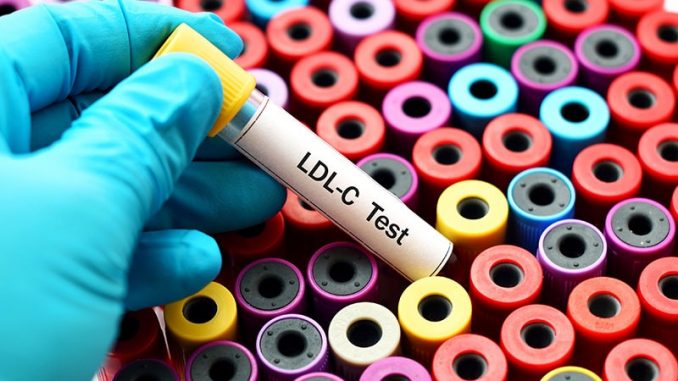
Cholesterol levels in American adults have improved over the previous decade, but a large cross-sectional analysis of more than 30,000 US adults has found notable disparities in cholesterol control, particularly among Asian adults, lower lipid control rates among Black and other Hispanic adults compared to whites, and no appreciable improvements for people taking statins.
“We found that total cholesterol improved significantly among US adults from 2008 to 2018,” senior study author Rishi Wadhera, MD, of Beth Israel Deaconess Medical Center in Boston, said in an interview. “When we looked at rates of lipid control among adults treated with statins, we found no significant improvements from 2008 through 2018.”
He noted the patterns for lipid control were consistent for women and men, adding, “In contrast to all other racial and ethnic groups, Mexican American and Black adults did experience significant improvements in cholesterol control. Despite this progress, rates of cholesterol control still remained significantly lower in Black adults compared to white adults.”
The study analyzed lipid concentrations from 33,040 adults ages 20 and older from the National Health and Nutrition Examination Surveys (NHANES), using 2007-2008 as the baseline and 2017-2018 as the endpoint. With lipid control defined as total cholesterol of 200 mg/dL or less, the analysis showed that total cholesterol improved in the overall population from 197 to 189 mg/dL in that time (95% CI, –12.2 to –4.9 mg/dL; P < .001).
The study analyzed lipid trends in several demographic categories. Age-adjusted total cholesterol for women improved significantly, from 199 to 192 mg/dL (95% CI, –11.6 to –3.6 mg/dL; P < .001), but improved slightly more for men, from 195 to 185 mg/dL (95% CI, –14 to –5.1 mg/dL; P < .001).
Overall, age-adjusted total cholesterol improved significantly for Blacks (–7.8 mg/dL), Mexican Americans (–11.3 mg/dL), other Hispanic adults (–8 mg/dL), and whites (–8.8 mg/dL; P < .001 for all), but not for Asian adults, measured from 2011-2012 to 2017-2018: –0.2 mg/dL (95% CI, –6.5 to 6.2 mg/dL; P = .9).
The study found that LDL cholesterol, on an age-adjusted basis, improved significantly overall, from 116 mg/dL in 2007-2008 to 111 mg/dL in 2017-2018 (95% CI, –8.3 to –1.4 mg/dL; P = .001). However, unlike total cholesterol, this improvement didn’t carry over to most ethnic groups. Mexican American adults (–8 mg/dL; P = .01) and whites (–5.9 mg/dL; P = .001) showed significant improvements, but Asian, Black, or other Hispanic adults didn’t.
The study also evaluated lipid control in people taking statins and found that, overall, it didn’t change significantly: from 78.5% in 2007-2008 to 79.5% in 2017-2018 (P = .27). Mexican American adults were the only ethnic group that showed significant improvement in lipid control, going from 73% in 2007-2008 to 86.5% in 2017-2018 (P = .008).
Disparities in Lipid Control
Women had notably lower lipid control rates than men, with an odds ratio of 0.52 in 2007-2010 (P < .001), with similar patterns found in 2011-2014 (OR, 0.48) and 2015-2018 (OR, 0.54, P < .001 for both).
Lipid control worsened over time for Black and other Hispanic adults compared to whites. In 2007-2010, lipid control rates among the studied ethnic groups were similar, a trend that carried over to the 2011-2014 study interval and included Asian adults. However, in 2015-2018, Blacks had lower rates of lipid control compared to whites (OR, 0.66; 95% CI, 0.47 – 0.94; P = .03), as did other Hispanic adults (OR, 0.59; 95% CI, 0.37 – 0.95; P = .04).
These disparities between sexes and ethnic groups warrant further investigation, Wadhera said. “We were surprised that women had significantly lower rates of cholesterol control than men,” he said. “We need to better understand whether gaps in care, such barriers in access, less frequent lab monitoring of cholesterol, or less intensive prescribing of important treatments, contribute to these differences.”
He called the lower lipid control rates in Black and Hispanic adults “concerning, especially because rates of heart attacks and strokes remain high in these groups…. Efforts to identify gaps in care and increase and intensify medical therapy are needed, as treatment rates in these populations are low.”
While the study collected data before the COVID-19 pandemic, Wadhera acknowledged that the management of cardiovascular risk factors may have worsened because of it. “Monitoring cholesterol levels and control rates in the US population as we emerge from the pandemic will be critically important,” he said.
In an accompanying editorial, Hermes Florez, MD, PhD, of the Medical University of South Carolina in Charleston, and colleagues called for adequately powered studies to further investigate the disparities in the Asian and Hispanic populations. “Worse rates of cholesterol control observed in women and in minority populations deserve special attention,” they wrote.
They noted that future studies should consider the impact of guidelines and recommendations that emerged since the study started, namely from the American College of Cardiology/American Heart Association 2013 guidelines, Healthy People 2030, and the US Preventive Services Task Force (JAMA. 2022;328:746-753).
“More important, future work must focus on how to effectively eliminate those disparities and better control modifiable risk factors to enhance outcomes for all individuals regardless of race and ethnicity,” Florez and colleagues wrote.
The study received funding from the National Heart, Lung, and Blood Institute. Wadhera disclosed relationships with CVS Health and Abbott. Florez and colleagues have no disclosures.
This article originally appeared on MDedge.com, part of the Medscape Professional Network.
Source: Read Full Article